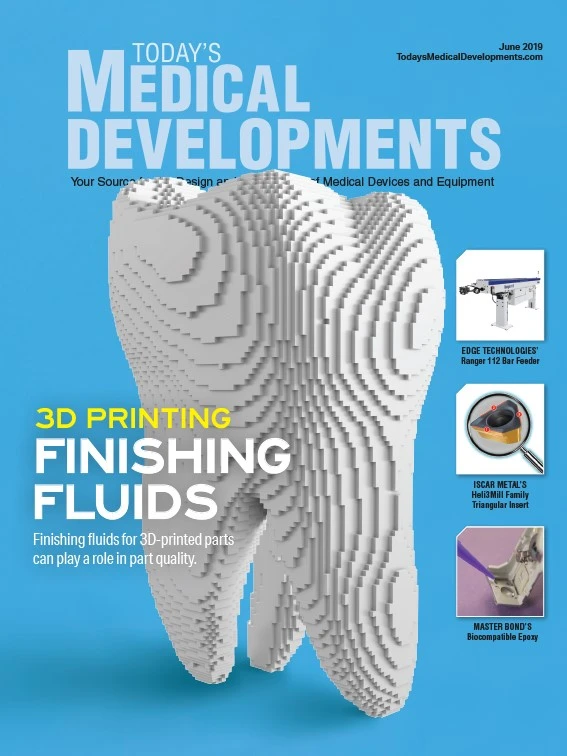
Indexable cutter line
Heli3Mill family of indexable cutters includes the HM390 TPKT 0502PDR 5mm (0.197") edge triangular insert. Designed for rough milling of compact parts, small-size cavities, and pockets at high feed rates, Heli3Mill is applicable to medical parts manufacturing and a solution for low-power machining centers and turn-mill machine tools.
The cutter features 90° cutting-edge angle, advanced cutting geometry that reduces cutting forces for smooth cutting, ramping-down ability, coolant holes directed to each cutting edge, and a protective-polished coating on the cutter body for uninterrupted chip flow and corrosion- and wear-protection.
Iscar Metals USA
https://www.iscarmetals.com

Magazine-style automatic bar feeder
The Ranger 112 magazine-style automatic bar feeder is for round, square, and hexagonal bar stock in lengths up to 12ft 5" and diameters of 1.5mm to 15mm.
Equipped with a Mitsubishi controller and belt drive, it features dual anti-vibration devices stabilizing bar stock – one internal to the bar feeder, the other mounted between the telescopic nose and the lathe headstock – maximizing revolution per minute potential. Polyurethane guide channels increase strength and stability.
Edge Technologies
https://www.edgetechnologies.com
Dual-curing biocompatible epoxy
The UV22DC80-1Med single component, nanosilica-filled compound features a UV- and heat-curing mechanism, passes USP Class VI tests for biocompatibility, and meets ISO 10993-5 for cytotoxicity. It offers low shrinkage upon cure, excellent abrasion resistance, and dimensional stability with a 30" to 35" x 10-6°C coefficient of thermal expansion. It is a reliable electrical insulator with volume resistivity of more than 1014ohm-cm and dielectric constant of 3.85 at 60Hz. UV22DC80-1Med is optically clear with a refractive index of 1.52.
UV curing for UV22DC80-1Med takes 10 seconds to 30 seconds at a 365nm wavelength and 10mW/cm2 to 40mW/cm2 of UV output. Heat curing can be initiated at 80°C. Optional post curing at 125°C to 150°C for 15 minutes to 30 minutes will increase the glass transition temperature above 125°C.
The epoxy has a 500cps to 3,500cps viscosity at 75°F (~23°C), bonds well to a range of substrates, and has good resistance to various sterilization methods.
Master Bond
https://www.masterbond.com
Get curated news on YOUR industry.
Enter your email to receive our newsletters.
Explore the June 2019 Issue
Check out more from this issue and find your next story to read.
Latest from Today's Medical Developments
- Roundup of some news hires around the manufacturing industry
- Mazak’s INTEGREX j-Series NEO Machines
- The Association for Advancing Automation (A3) releases vision for a U.S. national robotics strategy
- Mitutoyo America’s SJ-220 Surftest
- #56 - Manufacturing Matters - How Robotics and Automation are Transforming Manufacturing
- STUDER looks back on a solid 2024 financial year
- HANNOVER MESSE 2025: Tailwind for industry
- Find out the latest developments in tool path strategies for machining








